Studio Visit: Xie Dong, Beijing
The Chinese artist’s nature-inspired bone china creations seize ephemeral moments

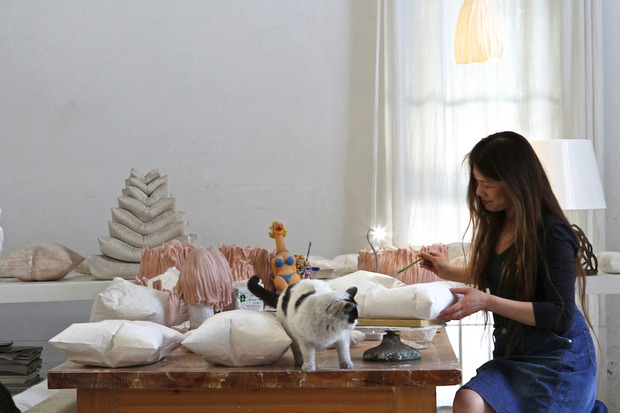
After much exploration and experimentation, Beijing-based porcelain artist Xie Dong finally settled on bone china as her medium of choice, and did so because of the folds it can create. A tradition that originates from 18th Century Britain, bone china turns into a translucent, milky ivory color and becomes extremely hard and strong after it’s fired, thanks to the ashes from cattle bones that are incorporated. The extensive production process and expensive raw materials made it a luxury popular among royalty and the elite, though Xie prefers to keep her pieces white rather than decorating them with traditional gold foil. Her stunning, delicate-looking creations have been featured in publications all over the world—she’s collaborated with Italian brand Driade for a tableware collection and was invited by Poltrona Frau to design a chair for the Italian furniture maker’s 100th anniversary.
Xie welcomed us into her studio in northeast Beijing’s quiet neighborhood Huantie Art City, where a flock of adopted cats walk between white, organic-shaped porcelain artworks that look like items that have been collected from forests and oceans.
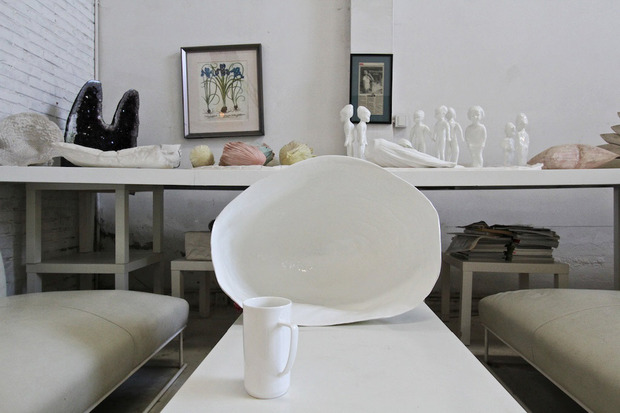
It was a sunny day, I was eating a chocolate bar, and I suddenly realized how beautiful were the wrinkles on the little sheet of tinfoil reflecting the light. I wanted to preserve its beauty, to keep it forever.
The artist has always loved drawing—since she was a kid, her talent was praised by parents and teachers—but Xie’s adventure with ceramics started 10 years ago. “It was a sunny day, I was eating a chocolate bar, and I suddenly realized how beautiful were the wrinkles on the little sheet of tinfoil reflecting the light,” she says. “I wanted to preserve its beauty, to keep it forever.” Since then, “seizing the ephemeral moments” has become the signature of her artworks. After experimenting with different media, she visited a bone china factory in Tangshan and immediately saw the possibility to use it for her creations. The transparency and white pureness of the medium seemed to match perfectly with the idea of floating and weightless objects.
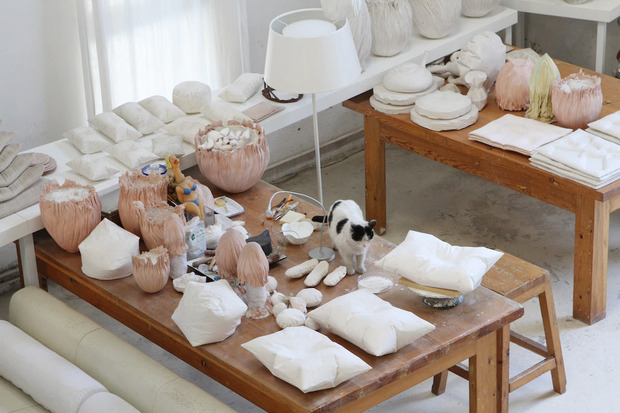
While an audience of cats and dogs observe Xie polishing the last details of a porcelain pillow, she shares with us her creative motivations: “My artworks usually take inspiration from nature; air and water, but also from cats. There’s the tension of desire in them and that’s something I like very much: you want to approach them and they run away, to later come back when you wouldn’t expect it. Daily life situations can also be a source of inspiration, especially when I feel relaxed; sometimes you happen to be the most creative when you’re really not in the mood for working! Yesterday I dreamed of red flowers, of an unimaginable pure and bright shade, I wonder how could I express the feeling of this marvelous color through my artworks.”
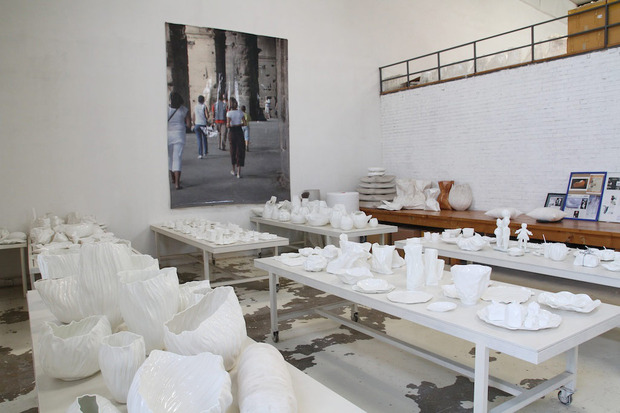
Each piece is shaped on a plaster mold by the very same material Xie wants to reflect in the artwork. While for small design objects like cups and trays the process is relatively simple, for bigger art pieces, like vases or rather more abstract creations, the production is a lot more challenging. “I like the magic of building everything from scratch,” she says. “Back and forth from the mold to the oven, creating the perfect thickness and giving each creation the ideal balance require a lot of experimentation, one single piece can take up to five years to be completed.”
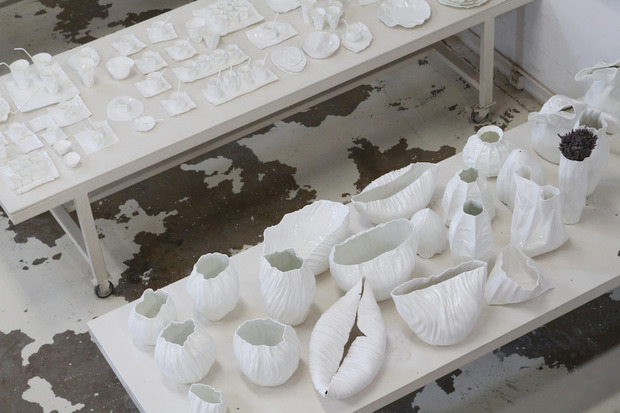
Currently, Xie’s production counts 400 models, but after years of experiments, now her goal is to reduce her collection to 30 pieces, in order to refine them and perfect the concept: “I’ve been doing most of the pieces without much consideration about the end use and I like doing practical things, objects people can use at home, but obviously focusing on my personal artworks gives me much more freedom.”

After creating the first series called Zhezhou (which translates to “wrinkle”), whose shape and texture mimic the kinks and wrinkles of paper or tinfoil, Xie created three more series, which are currently in production: flowing water, inflatable and melting ice. In the future, she also envisions a slow-life approach to retail her artworks, “I would like to open several small shops scattered around the world. Nothing big, but just nice and pleasant corners of small villages, like in Tuscany, where I can showcase my artworks and enjoy the beautiful landscape.”
An online shop for peddling her pieces is in the works, but Xie’s works can be found at the UCCA Store in Beijing as well as several design shops around the world, and online from Bundshop.
Photos by Alessandro De Toni












